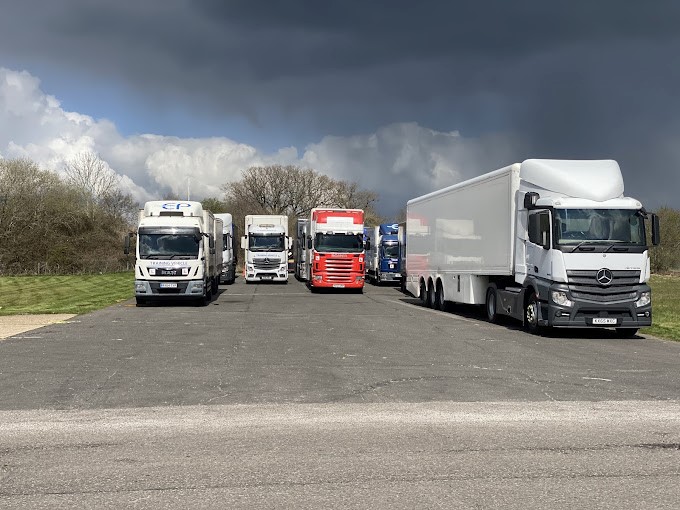Fri, July 14, 2023
Cat C Vs Cat C+E


For individuals aspiring to become Heavy Goods Vehicle (HGV) drivers, understanding the various licence categories is crucial. In this blog post, we will delve into the differences between HGV Cat C and HGV Cat C+E licences and explore the process of obtaining these licences. By gaining clarity on the distinctions and requirements, aspiring drivers can make informed decisions about their career paths in the HGV industry.
1. HGV Cat C Licence:
The HGV Cat C licence, commonly known as the Class 2 licence, allows drivers to operate rigid vehicles weighing over 3,500 kilograms with a trailer limit of up to 750 kilograms. This licence is suitable for individuals who wish to drive vehicles such as delivery vans, tipper trucks, and refuse collection vehicles. It’s worth noting that over two thirds of all HGV’s driven on the road within the UK are Cat C rigid type trucks. Despite the DVSA now allowing candidates to skip the Cat C and go straight to C+E, EP Training recommends that customers opt for the Cat C rather than straight to C+E. The reason being it is much less challenging to acquire the Class 2 rather than the Class 1.
2. HGV Cat C+E Licence:
The HGV Cat C+E licence, also known as the Class 1 licence or artic, enables drivers to operate articulated vehicles with a maximum weight exceeding 3,500 kilograms but no more than 44 tonnes MGW. Trailers may be towed with this HGV licence and this can be a draw-bar or articulated configuration. As the DVSA changed the rules for new entrants seeking a truck licence it is now possible to leapfrog the Cat C and go straight to the C+E. It is certainly not easy going from a car licence to manoeuvring a 44 tonne articulated truck to the standard required to pass the test. As mentioned earlier EP always recommends you complete the Cat C, Class 2 before embarking onto the Class 1.
That all being said it is still your choice whether to acquire Cat C first or head straight to the big ones. If you do go straight to Class 1 and pass then you will also be given C1 and Cat C.
Regardless of which route you decide to take the steps below must be taken.
a) Medical Examination: Applicants must undergo a medical examination to ensure they meet the necessary health requirements for professional driving. This will mean having your blood pressure (BP) measured and testing your eyesight. The medical will take no more than 15 minutes and a D4 (DVLA medical application form) must be completed and sent to DVLA.
b) Theory Test: A multiple-choice theory test must be passed, which covers topics like road safety, vehicle maintenance, and legal responsibilities. The pass mark needed for this is 85%.
c) Hazard Perception Test: This test assesses the ability to identify and respond to hazards on the road. This will be the same HP test you did when you were undergoing car theory tuition. There is therefore no difference from car to lorry HP. This is a HP theory test that does NOT reflect what an HGV driver would see when driving down the road.
d) CPC Case Study. If you are a new entrant to the HGV world, did not pass your car test before 1st January 1997 and wish to drive commercially then you must sit the CPC case study theory test. Interesting to note the DVSA have NOT published the Q and A for this theory test, therefore you don’t know what you will be asked in this test. However, it is extremely easy and most people just walk in off the street and pass this test without prior tuition.
d) Practical Skills Test: Candidates must demonstrate their driving skills by completing a practical examination, including vehicle safety checks, reversing exercises, and a road driving assessment.
The “driving test” itself has spilt into 2 sections, 3A and 3B. 3A is the off-road manoeuvres exercise which will normally be conducted by your local training company. The 3B part will be the on-road driving test which lasts approximately 1 hour and will be administered by a DVSA employed driving examiner. This is by far the most challenging part of the process so good training is essential.
e) CPC Practical test. Better known as Module 4 this is the second section of Driver CPC new entrants must complete to be awarded a Driver CPC card. This practical demonstration test, like the CPC case study is very straight forward. Candidates need to ensure they use a suitable HGV truck to show their answers. There is no on-road driving for this part of the examination.
Understanding the differences between the HGV Cat C and Cat C+E licences is essential for individuals considering a career in the HGV industry. While the Cat C licence qualifies drivers to operate rigid vehicles, the Cat C+E licence allows for the operation of articulated vehicles. By following the necessary steps, including medical examinations, theory and practical tests, and obtaining the CPC, aspiring HGV drivers can acquire these licences and embark on fulfilling careers in the transportation sector.
